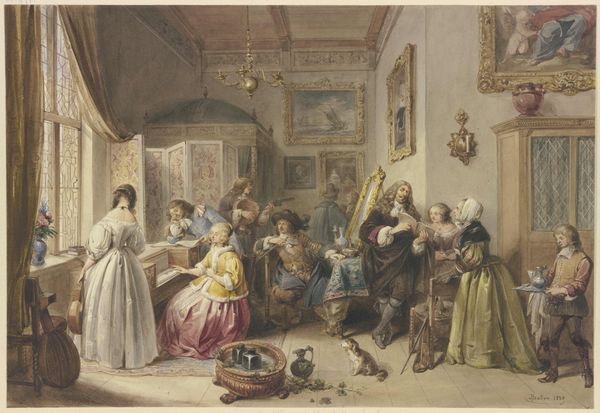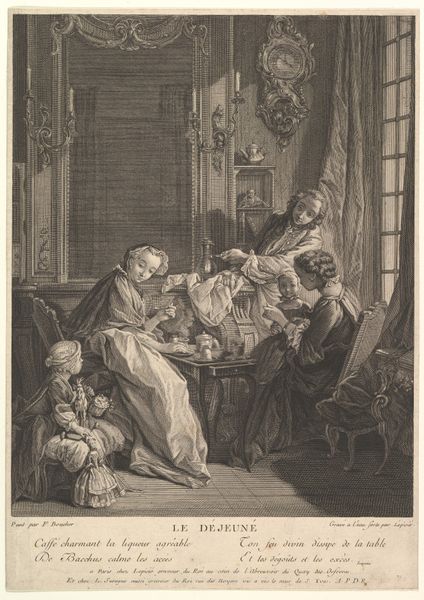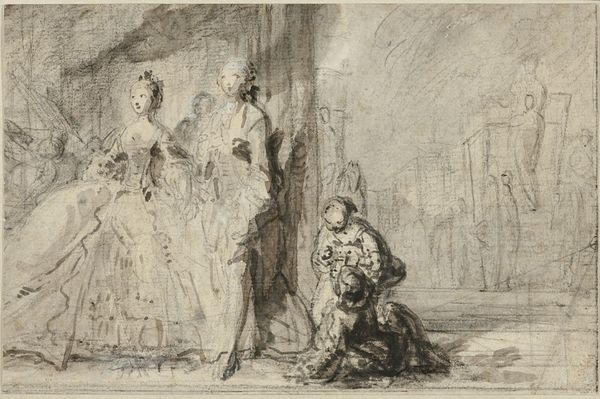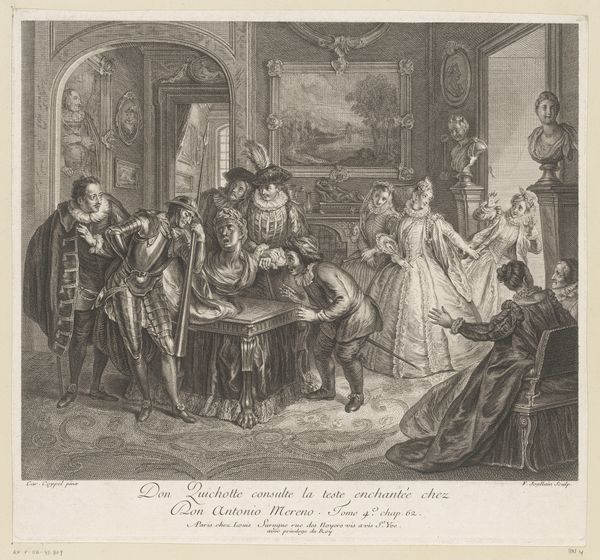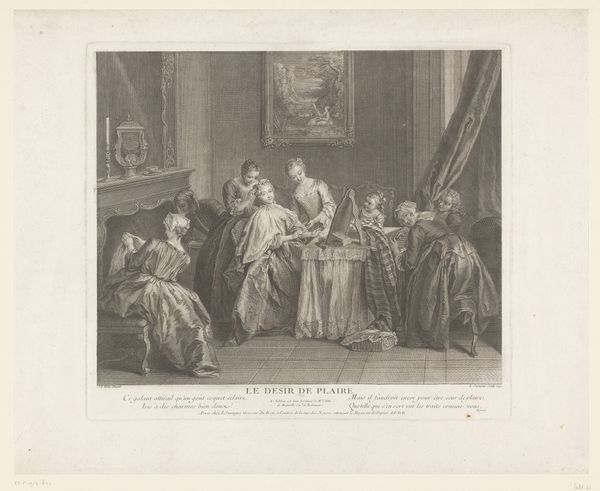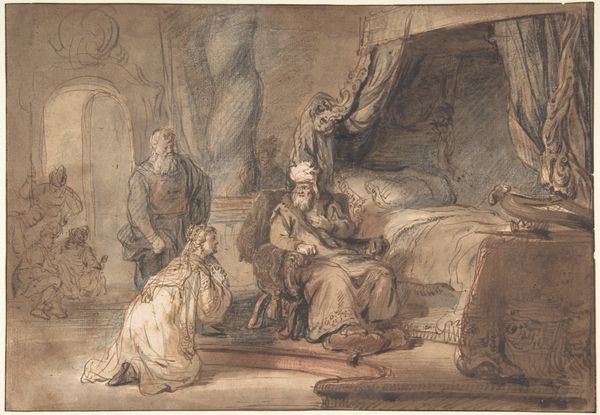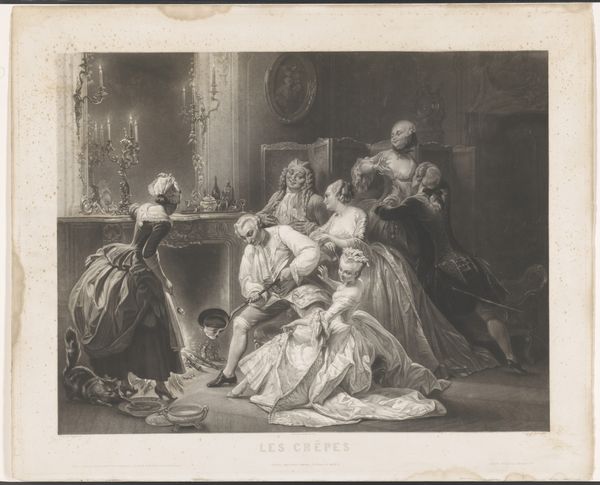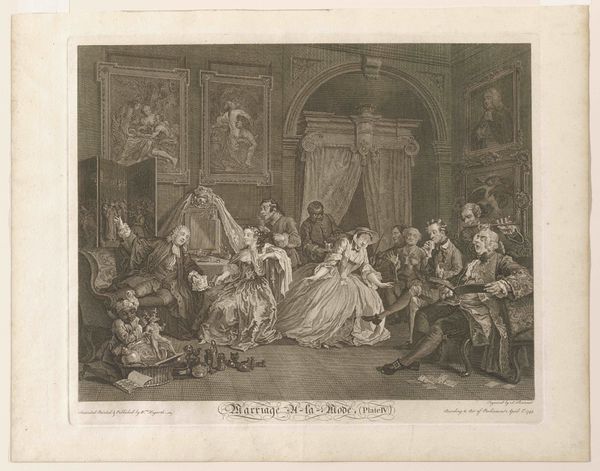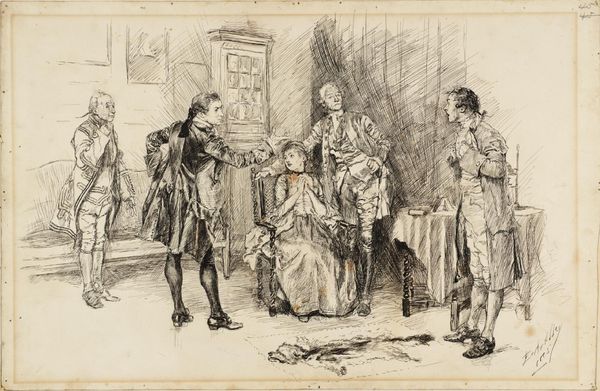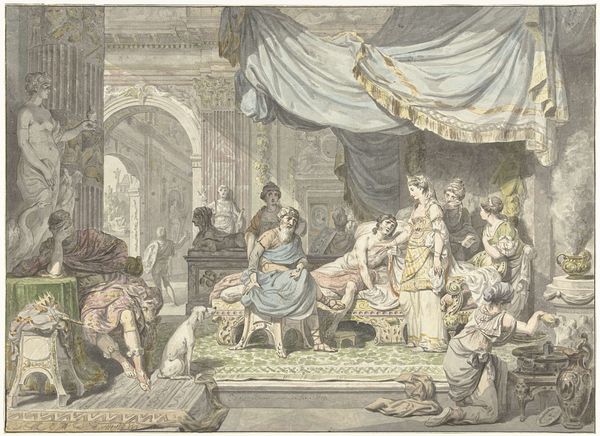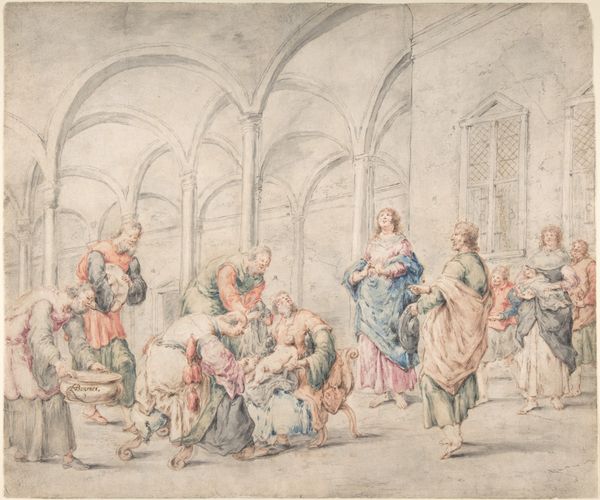
Scene with Family and Guest in Seventeenth-century Interior 1825 - 1878
0:00
0:00
drawing, print, watercolor
#
portrait
#
drawing
# print
#
watercolor
#
child
#
coloured pencil
#
underpainting
#
men
#
genre-painting
#
history-painting
#
academic-art
#
watercolor
Dimensions: sheet: 7 5/8 x 9 7/8 in. (19.4 x 25.1 cm)
Copyright: Public Domain
Curator: This is Joseph Nash's "Scene with Family and Guest in Seventeenth-century Interior," likely executed sometime between 1825 and 1878. You can find it here at the Metropolitan Museum of Art. Editor: It strikes me as quite airy, almost ghostly. The light seems to wash everything out, giving it a dreamlike quality. The subjects in the room look stiff, formal. What's happening here? Curator: Nash was very interested in the craft of architectural rendering. Primarily working in watercolor, and occasionally incorporating other media like coloured pencil, he produced meticulously detailed prints of historic interiors. Here we see an imagined domestic scene, though based on an extensive material understanding of period interiors, furnishings, and costumes. Editor: So it’s less about a specific historical moment, and more about recreating a feeling of seventeenth-century domesticity? The image raises interesting questions about the performativity of gender roles, wouldn't you say? Look at the seated woman, centrally placed, surrounded by children, seemingly confined to the domestic sphere while the men engage in…what exactly? A negotiation, a transaction of some kind? Curator: I appreciate how you draw attention to those power dynamics. The labor involved in maintaining these domestic spaces, the clothing…it all points to very specific systems of production and consumption. We’re seeing a display of wealth and status, rendered in careful detail with specific and likely quite costly materials. The underpainting gives it an interesting depth. Editor: Indeed, consider the gazes. Everyone seems to have their assigned place and function, even down to the positioning of the children. The scene, perhaps unintentionally, reveals the artifice and constructed nature of social hierarchy during that era. We, today, can see that these representations do nothing if not normalise the structures of unequal treatment. Curator: Precisely. Nash, through his skilled hand and material choices, is offering a window into the past. A past that was created and maintained with great effort by real labor, making him very good at his commissioned paintings and renderings. Editor: Which prompts reflection on the choices and exclusions inherent in historical narratives, especially how art itself reinforces dominant perspectives on identity, power and worth. It is essential to bring critical eyes. Curator: Definitely something to contemplate as we view historical pieces. Editor: I’ll leave thinking about the value and power behind representations and interpretations!
Comments
No comments
Be the first to comment and join the conversation on the ultimate creative platform.
